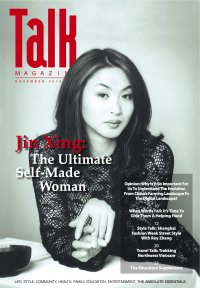A Father’s Legacy
In the heart of Tianzifang, one of Shanghai’s most commercial enclaves, lies an art gallery with an entirely non-commercial purpose.
Ren Weiyin is now recognised as perhaps China’s original impressionist painter – a lover of colour and a depicter of uniquely Chinese settings, painted in a noticeably European style.
During his lifetime, from 1918 to 1995, however, Ren’s legacy was not as bright as his canvases. Denounced by the communist government for his bourgeois sensibilities, he spent the prime of his life repairing shoes for less than RMB 1 per day, living in a tiny room with his wife and three children.
One of those children is 55-year-old An Ren, a fashion designer and, for the past two years, gallerist. She opened a gallery devoted to hundreds of her father’s works in her possession two years ago – and not one of them is up for sale.
“I don’t have children and I consider this gallery to be my child,” she told Talk over lunch in her French Concession home, before explaining that she is no hagiographer, and her father no saint. “I’m crazy about his work, but he wasn’t a very good father. Chinese men are very demanding. He was really a nasty husband, a womaniser... but as an artist, he was great,” she added.
“I wanted his works to just stay hanging so people can see them. He painted them for people to see and I feel as though these paintings are a part of Chinese history,” she explained.
The style of Ren Weiyin’s work is the product of a number of unique influences, which converge in a vibrant amalgamation of East-meets-West.
His earliest influencers were European teachers hired by Ren’s aunt (and eventually adopted mother, who along with his uncle, took custody of the boy when his parents died). An Irish society lady, Ren’s aunt recognised his artistic talent when the boy was only seven and encouraged his study of European artistic styles.
As a young man, however, Ren became fascinated with Chinese painting styles, an interest that would remain with him throughout his life.
The aesthetic for which he is best known; ethereal oil-paintings which lack the solidity of the European style but are in keeping with traditional Chinese painting techniques, were not only born of a combination of interests, but also through necessity.
As for the future of the gallery, An Ren simply hopes to keep telling people the story of her father’s life and work, and hopefully, in the process, provide a link between today’s contemporary art boom and the country’s troubled recent history with artists.
“It’s a shame for me to admit, but this country, even now, if you aren’t in the system, no one cares about you. My father was isolated, but in a way he was lucky, and he never gave up painting,” An Ren said. “So many intellectuals in China of his age at his time, they had no chance to live or work, their creativity was buried.”
But not Ren Weiyin’s – the fruits of his labour are still hanging, and will stay there as long as his daughter can help it.
Ren Weiyin Art Gallery, No. 3, Lane 210 Taikang Lu, near Sinan Lu

